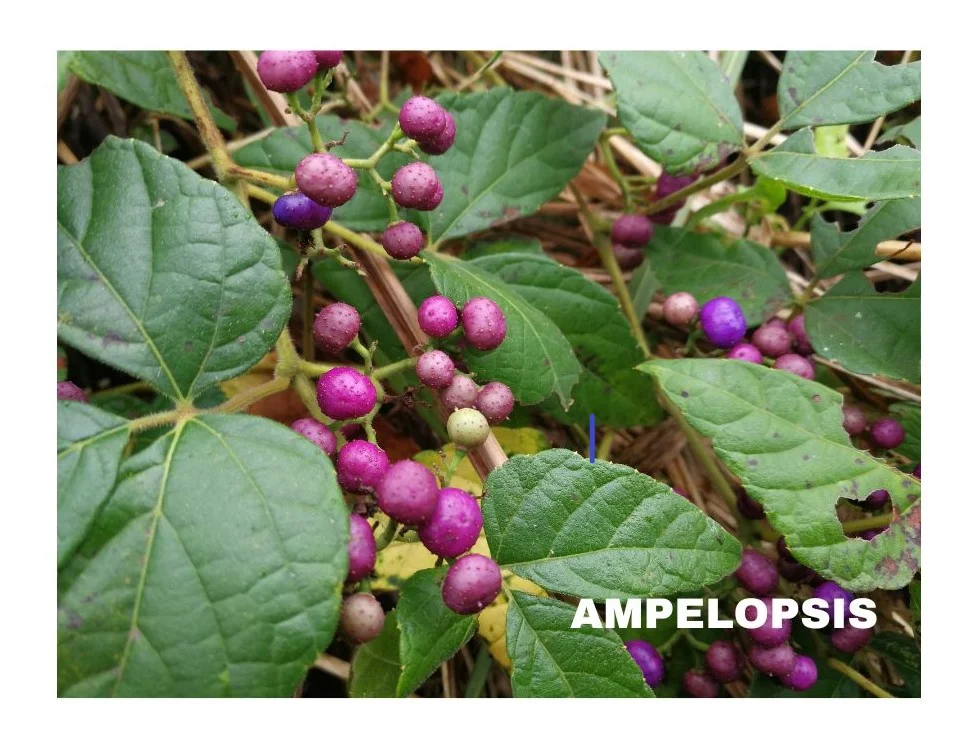Ampelopsis, commonly known as Virginia Creeper, is a homeopathic remedy primarily associated with conditions such as renal dropsies, hydrocele, and chronic hoarseness in individuals with a scrofulous diathesis.
This remedy is characterized by choleric symptoms and tends to exhibit aggravations around 6 p.m. Notably, dilated pupils are a distinctive feature.

Table of Contents
ToggleSOURCE INFORMATION
The Virginia Creeper plant, scientifically known as Parthenocissus quinquefolia, is native to North America.
- Botanical Name: Parthenocissus quinquefolia
- Common Name: Virginia Creeper
- Family: Vitaceae
- Native Region: North America
- Part Used: Leaves, stems
Virginia Creeper is a deciduous vine with palmately compound leaves typically consisting of five leaflets. The plant is known for its climbing habit and ability to cling to surfaces using adhesive pads.
GENERAL CHARACTERISTICS
- Choleric temperament, indicating a disposition towards irritability and anger.
- Dilation of pupils is a noteworthy characteristic.
- The remedy is often linked to scrofulous constitutions with glandular affections.
KEY SYMPTOMS AND INDICATIONS
- Renal Dropsies and Hydrocele
- Virginia Creeper has shown beneficial effects in cases of renal dropsies (accumulation of fluid in the kidneys) and hydrocele (fluid accumulation in the scrotum).
- Chronic Hoarseness in Scrofulous Patients
- Individuals with a scrofulous disposition, prone to glandular swellings and inflammation, may find relief from chronic hoarseness with the use of Ampelopsis.
- Choleric Symptoms
- The remedy is marked by choleric symptoms, indicating irritability, anger, and a bilious temperament.
- Temporal Aggravation
- Symptoms typically worsen around 6 p.m., suggesting a temporal aggravation pattern.
- Soreness in Left Costal Region
- Sensitivity and soreness in the left costal (rib) region are characteristic symptoms associated with Ampelopsis.
- Joint and Back Pain
- Elbow joint pain and soreness in the back are common manifestations of the remedy. Soreness may extend to all limbs.
- Gastrointestinal Disturbances
- Ampelopsis can be indicated in cases of vomiting and purging with tenesmus (straining during bowel movements). Audible rumbling in the abdomen may also be present.
MODALITIES
- Generally worse around 6 p.m.
- Aggravation: Left costal region sore and sensitive; elbow joint pain; back sore.
- Soreness of all limbs.
WHAT ARE MODALITIES IN HOMOEOPATHY?
DOSAGE
- Second to third potency is recommended for Ampelopsis.
Frequently Asked Questions (FAQs)
What conditions can Ampelopsis address?
- Ampelopsis is known to be beneficial for renal dropsies, hydrocele, and chronic hoarseness in individuals with a scrofulous diathesis.
When is Ampelopsis generally worse?
- Symptoms of Ampelopsis tend to worsen around 6 p.m., and aggravations are noted in the left costal region, elbow joints, and back.
What is the temperament associated with Ampelopsis?
- Choleric symptoms, including irritability and anger, are characteristic of individuals who may benefit from Ampelopsis.
Are there specific indications for gastrointestinal issues with Ampelopsis?
- Yes, Ampelopsis may be indicated in cases of vomiting, purging with tenesmus, and rumbling in the abdomen.
What is the recommended dosage for Ampelopsis?
- The second to third potency is commonly recommended for Ampelopsis.
- However, it is advisable to consult with a homeopathic practitioner for personalized guidance.
Note: This information is for educational purposes and not a substitute for professional medical advice. Consult a qualified healthcare professional for individualized health concerns.
